Understanding the exposure triangle requires you to have a firm grasp on aperture, shutter speed and ISO. These three settings make up the exposure triangle. In this post we will be diving into just one of these settings and that is aperture.
Each setting is extremely important to create a properly exposed, sharp photo. The key is making sure you understand how to get them to work together to create the photo you want. So let’s get started on the first key element in the exposure triangle.
Read more: 3 Steps for Perfect Exposure for Every Photo
Table to Contents
What is aperture?
Aperture is the hole or opening in which light travels through. It determines not only how much light to bring in, but also how much of your image is in focus. Aperture is the actual opening of the lens’s diaphragm.
What is f-stop?
Aperture and f- stop are very similar. Sometimes aperture will be written and talked about in the term “f – stop,” which is written like f/. That term is followed by a number like 1.2, or 5.6 etc. So you will hear photographers say “I had my f-stop at 3.2.” Or they will write it like this “In this photo, my aperture was f/3.2.”
Read more: How to use your f-stop to create amazing photos
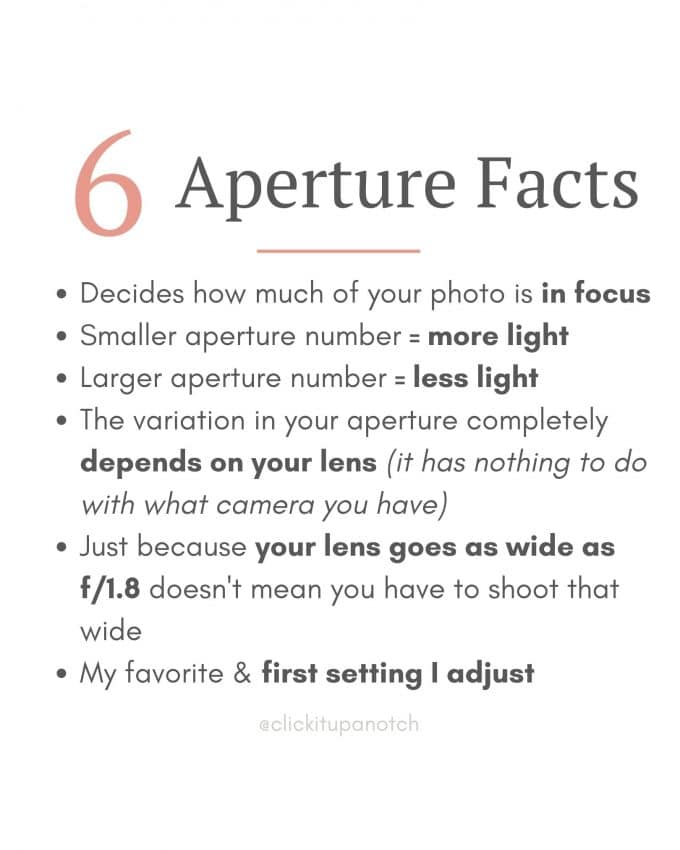
How aperture affects light

Read more: Everything You Need to Know for Unique Lens Flare Photos
Lower number means more light allowed
If you want to bring more light into your photo, you will want to shoot with a smaller number. This is often referred to as “opening up your aperture.”
For example if I need a light to find something in the dark, I am going to get a larger flashlight rather than using a laser pointer. If I need more light in my photo, I will open up to a lower number.
The diagram below illustrates that.
Larger number means less light allowed
To decrease the amount of light coming into your image you will use a higher aperture setting. This is referred to as “closing your aperture”.
Maybe the sun is very bright in the sky and I don’t need all of that to properly expose my photo, I will close to a higher number so less light is allowed in my photo.

Read more: Master Backlighting Photography in 8 Easy Steps
What does aperture do?
Besides affecting the light in your photo aperture also plays a large roll in how sharp your image will be. It determines how much of your photo is in focus and how much is blurred.
Creates a beautiful blurry background
The thing I love most about setting my f/ wide open is creating those blurry backgrounds that make photos look more professional.
If you have ever looked at a photo where the subject is tack sharp but the background is blurry, this is created by their choice of aperture. These type of photos really make the subject pop.
Read more: Master Depth of Field with 4 Simple Tips
Smaller number = less in focus
The smaller the aperture number like f/ 1.2 and f/ 2.8, then less of the photo will be in focus. That means you will have that nice blurry background.
Plus, if you are shooting in your house and have your aperture wide open it helps to hide the mess that may be in the background. That is one of my favorite tricks for capturing real life without all the mess.
The larger the number like f/11 or f/14, then more of the photo will be in focus which is perfect for group photos.
Read more: 6 Tips to Improve your Background
Shooting “Wide Open”
Another thing to keep in mind about when people talk about aperture or f stops is they say they are shooting “wide open” or a “narrow” or “smaller aperture.” When people say they are wide open or to “open up your aperture” they mean to lower your number.
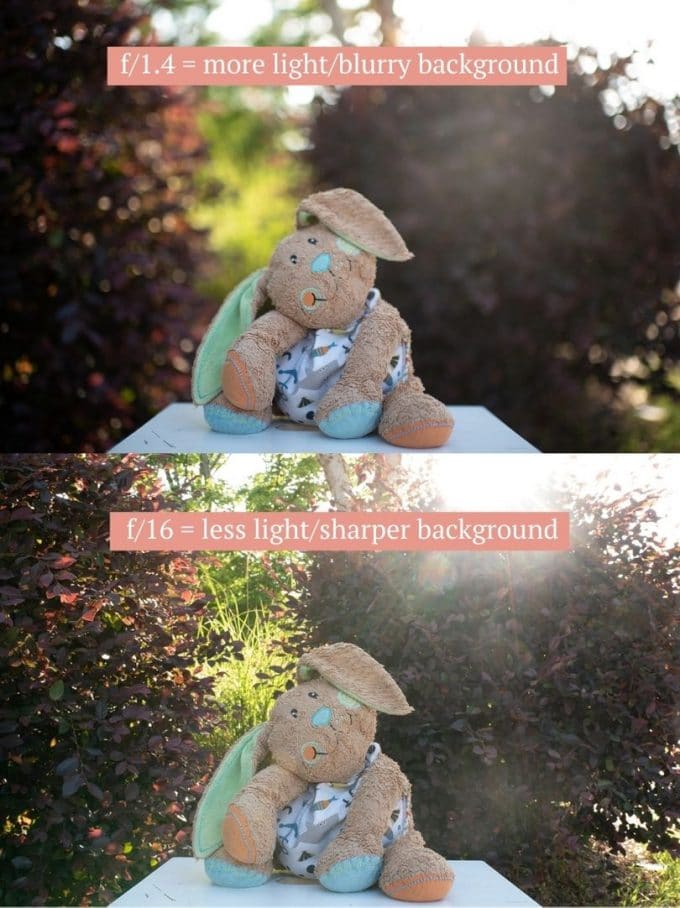
For example, if you are shooting at f16 and you open up your aperture you would change it to a lower number and like f1.8. If you want to shoot wide open you would change it to the lowest number possible depending on your lens.
Read more: 6 Reasons Why You Have Blurry Photos
Which aperture is best?
Depending on what photography style you are going for, you will find that one aperture range works best for you. Some people need a very low number to make their subject pop and stand out from a blurred back ground. While others will need everything in focus to really capture the scene.
Aperture really depends on your lens too. I wrote an entire post about Finding Your Perfect Lens.
Portraits use wider apertures
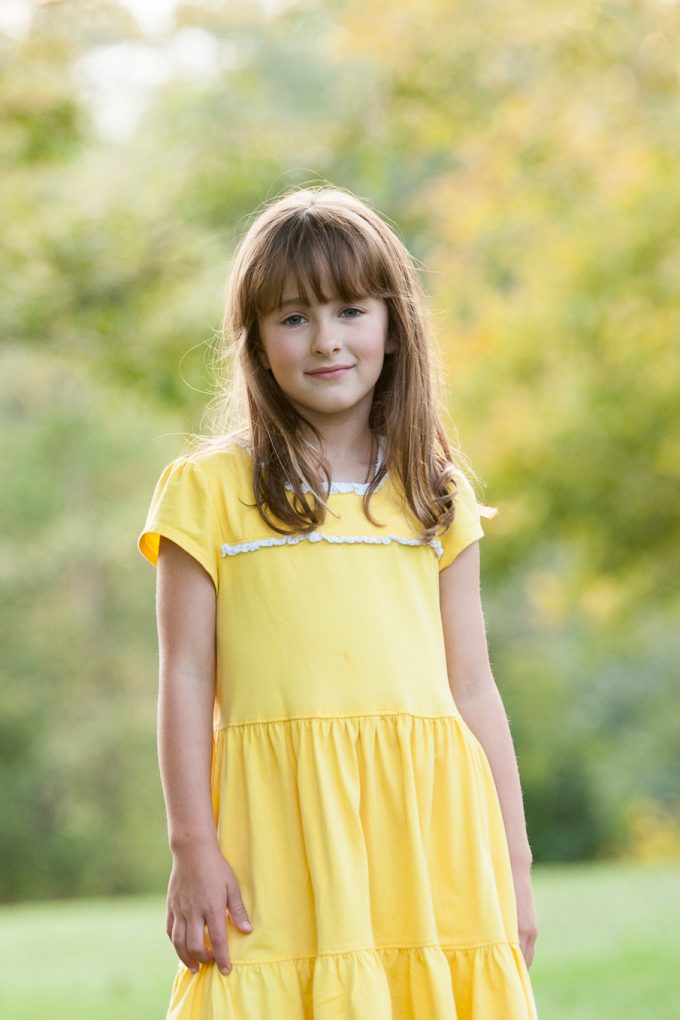
Portrait photographers like to use a low f/ number to draw the attention to the subject and nothing else. Having the subjects eyes in focus with a blurry background creates a beautiful and professional looking image.
Landscape photography use closed apertures
If you are trying to capture a beautiful landscape shot you are probably going to want everything in focus. You want to see the clear lake, the sharp trees, and the fluffy white clouds. If your aperture is too low, not everything will be in focus. So a closed aperture like f/14 or more will be what you use.
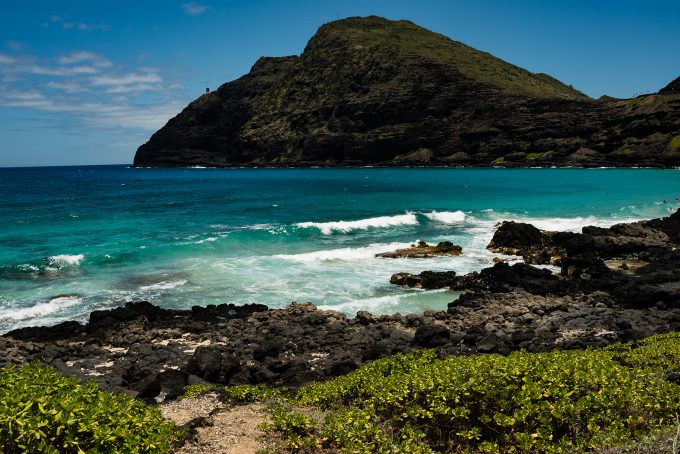
Read more: Elevate Landscape Photography with Light
Examples of different apertures
Here are a few examples of what a picture will look like using different aperture settings. I started wide open at f/1.4.
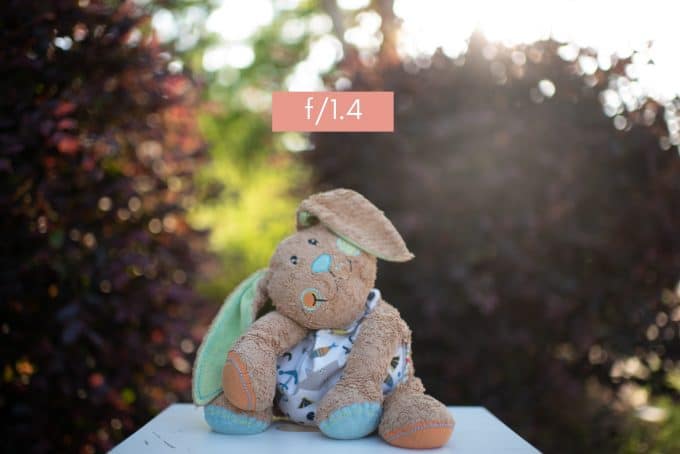
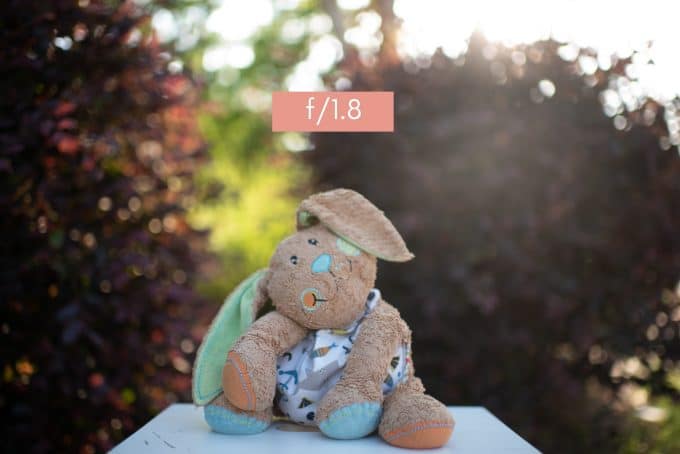
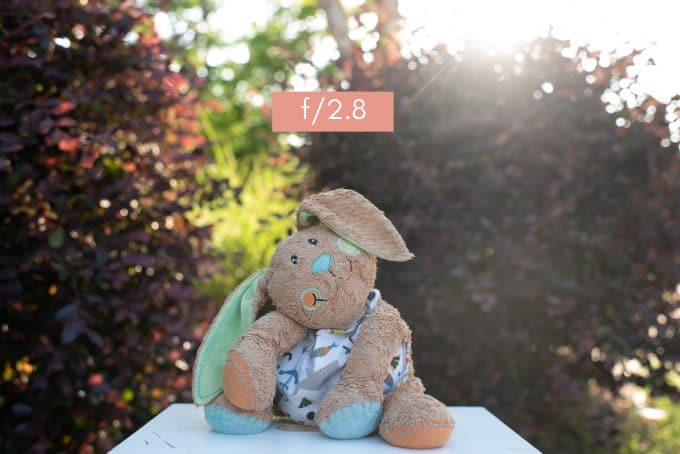
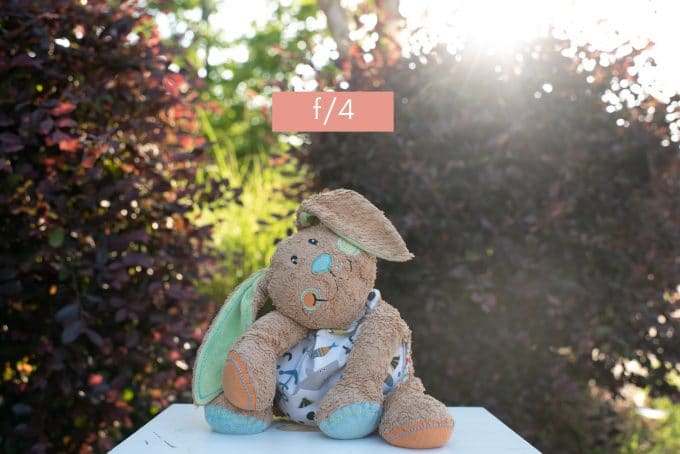
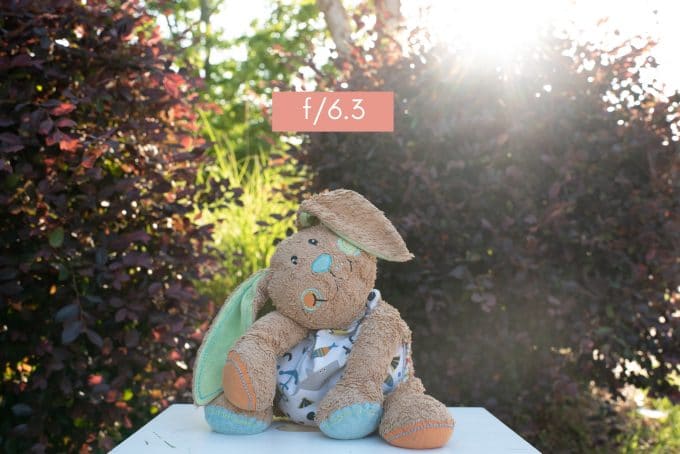
Notice how in the ones where my f/ was wider (smaller number) there is some great bokeh and as my aperture was more closed up you can see all the details in the background.
Frequently Asked Questions
They both have their place in photography. First determine how much light you need in your photo. Then decide how much of your image you want in focus. That will help you determine what will be the best aperture for your shot.
This is a number on the aperture scale. It usually means a smaller focal plane with a blurrier background. This f/ will let in a lot more light as well.
The lower the f/ number, the better. If it is a solo shot, f/ 1.8- f/2.8. Then based off of how many people & if they are on different focal planes, go up as necessary.
You want the majority of the scene in focus for landscape shots so you are going to want to keep your f/ at 10 or higher.
Read more:
How to Shoot Still Life Photography to Push Your Creativity
Everything You Need to Know to Capture & Edit a Stunning Sunset Silhouette
Complete Guide to Understanding the Exposure Triangle
How to Decide if 35mm vs 50mm is Right for you


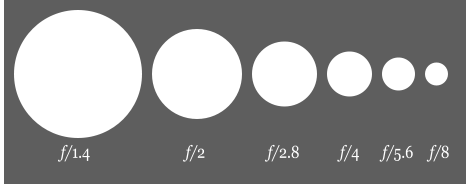





Great examples! I’ve been telling lots of my friends about your blog…it is SO helpful! Thanks for starting it.
Thanks! I appreciate you spreading the word :O)
OK this helps a lot! I didn’t understand about the “wide open” thing.
And the tree-head is hilarious.
LOVE these pics of Trisha! She looks like a model. I wish I had an adult to practice my photography on. haha.
Wow, there is another Amber!!!
I think changing the day and the theme is a great idea. I had no idea there were so many photo challenges out there, but I have learned there is far less participation on Friday’s. My Journey of Faith would probably be better if I would change the days.
did you get my email?
Stop, Janell, stop. You are always way cuter than me. :))
this was extremely helpful! your blog has really helped me change the way i take pictures. thank you!
That is wonderful to hear!!
Hi!! Just dropping a note to tell you I LOVE your blog, and I totally appreciate all the tips and tricks! I’m new at this, and I linked to you in my most recent post about shooting in Manual! Hope you check it out!!
Cheers.
http://gracelouisephotography.blogspot.com/2011/05/manual.html
Will go check it out :O)
I love the different examples…I am a visual person, like most of us and this is very useful!
Thanks again
This was so awesome. I need help shooting inside I totally struggle with getting it right.. I’m shooting in aperture mode with a speed light but I just can’t get it. Help????
Leann,
I wish I could help you but I have never shot in aperture mode or used a speed light. What lens are you using? Are you shooting with your lens wide open (lowest number). Low lighting inside is a challenge but the speed light should help you with your exposure. I would suggest setting your aperture as wide as it can go. Good luck! Sorry I’m not much help on this one!
Hi! I’m an Italian blogger and photographer. This is one of the best blog about photography that I found! It’s clear and well explained!
Welcome! Thanks so much! Glad you found this post useful!
Thanks for the post. Has me wanting to learn to shoot in manual.You explain it so simple that I may be able to do some of this.
Thanks! I hope you do decide to shoot in manual mode! I promise you will love it!
Love you blog, i have been so addictive to all of your posts, keep up cheers to a wonderful work. And thanks for sharing with us all of your knowledge!!!!!
Thanks so much!!
I have been practicing with wide open apertures (f/1.8, f/2.2) on a canon 50mm 1.8 lens but noticed that the subject in the pictures always seems “soft” when I use them. The model is in focus in comparison to the blurred background, but I have to bump up the clarity in post processing to make it look sharp. Am I missing something in terms of shutter speed or ISO that would help this problem?
Mmm…are you choosing your focal point?? http://clickitupanotch.com/2010/09/changing-your-focal-point/ Is anything in your photo sharp? Just wondering if maybe the focal point is falling on something other than your subject. Is your shutter speed fast enough to get a sharp image? Around 1/125 or higher?? Feel free to send me a picture with the settings and I can look at it for you :)
Great post–the examples are so helpful. Thanks!!
That is fantastic to hear :) Thanks!
Thanks! I’m so glad I found your blog. It has helped me so much!
That is great to hear! Welcome!
I love the bokeh effect from using smaller apertures. What I hate is that in getting that lovely bokeh, it is a constant struggle with how much depth of field I can get. It’s a rare day that I can get everything I want in focus because I have such a small depth of field when opening up the aperture. Very frustrating to me. I shoot in manual now, but this is something that hurts every macro I shoot.
Macro is really hard. When I shoot macro I normally shoot with my aperture around f/9 and worry more on focus than bokeh :)
I love shooting in AV mode! ever since I have discovered how beautiful bokehs are, I have been shooting in AV. Now, I am loving Manual. You tutorial is awesome especially picture tutorials. Made it easy to understand and apply.
Thank you!
Thank you so much! Glad you are enjoying the tutorials :)
My problem with shooting wide open is my focus. I’ll get half of my daughter in focus and half of her still blurred. Sometimes I feel like I may be standing too close to her and should back up a few steps. I also toggle one single focus point, which may also be one of my issues. Do you recommend an autofocus setting that would capture more of my subject than just a single point focus?
I do single point focus and change the focal point myself. Check out this post – http://clickitupanotch.com/2010/09/changing-your-focal-point/ I agree, shooting wide open with people can be a challenge to achieve the focus you are looking for.
Thank you for this website! I just got a nikon D3200 for Christmas and was overwhelmed by it. I read the manual and was even more overwhelmed. Your website breaks it down so simply. I finally feel like I am beginning to grasp the manual mode. Up until now I have just been doing the point and shoot. But this isn’t why I got the camera. I have always wanted to explore and learn more about photography. Again thanks!
Thank you for your kind words :) So glad you it is starting to make sense for you!
so glad i found your website! i’m new here and i love it! thanks!!
Thank you! Welcome!
Great examples! Those really help clear aperture up for me!
Thanks!
Nice examples.
Thank you for this website and all your information. It is great that you take such trouble to take shots to demonstrate to us the difference in apetures. I have learned much from your site and look forward to your emails to find out more.
Thank you :)
I love shooting “wide open” when I have one subject, but every time I have two subjects I have a hard time getting them both clear, while not closing up all the way. How do you find the perfect number without trying every one? It’s nice to still have some background blur…
Amber, one rule of thumb is to have your number at the same number of people are in the photo but I would say close down even more. If I’m photographing 2 of my daughters I may shoot at f/4. It also depends on what plane they are on. If they are on the same plane you are more likely to get them in focus than if they are on different planes in the image.
Hey Courtney.. love the picture examples! quick question..
i have a 50mm 1.4 lens and when i shoot my kids from far away and then zoom in on the photo i just took of them they aren’t clear. my question is when i shoot from far away (like 10+ feet away) with this lens should my aperture number be higher? thanks for your help!!
Hey Megan,
Their faces will not be as tack sharp if you are further away than if you were closer. It has something to do with the amount of pixels in the image. So I wouldn’t worry too much about that. :)
Great examples! Thanks!!!
Thanks!
Great examples, thank you so much
As you changed the aperture you also change the ss, but you didn’t write the example for that
Yes, you will need to change the shutter speed depending on the light you have available :)
Hi my name is Charles, i am based in Nigeria and have been gathering e books and videos on DSLRs so far yours is the most helpful ever. It is so easy to understand and guides properly. Thank you for this assistance.
Hi, Courtney… So grateful to find your help and examples… I just am starting and don’t even have a DSLR yet, but hope to figure out which one as I read your blog… My question is… What does it mean when they say to “stop it down”… I get confused… Thanks! P
When you read to stop down or use a smaller f-stop then you should use a larger number for your aperture.
Hello! Thank you for these tutorials , are very helpful! I am a beginner in photography. I have nikond 3200 and my lens are that one from the kit- f/3.5-5.6 . When i want to photograph a person , sometimes i can’t lower my aperture less than f/5.6 and the background in my portraits aren’t blurried at all. What can i do? or is the lens i need to change?
Thank you so so much, Courtney! For all these AMAZINGLY examples and lessons…. It really makes it so much easier than trying to learn out of the manuals or photography books… THIS is the only way to really learn and UNDERSTAND…thank YOU and may God bless you and your family for sharing all this!…… Pamela
Random question. :) In your pictures at 1.8 your model is sharp and in focus. I thought only part of her would be in focus at 1.8? Did you have to stay far away from her in order to get her sharp like?
I’m a newbie who still struggles with sharpness. Sigh..
Yes, the further away you are from your subject the more of them will be in focus at f/1.8.
Thanks Courtney,
I am taking it day by day till i get it right.
You definitely will!
I’m messing with aperture and with both of my lens I can only go as low as f4.0. Also, as much as I mess with the 3 settings, in M I can’t get the dial inside my eye piece to move to 0. It stays at -2??? Do I have the wrong lens’ ?
I have a EFS 18-55mm 0.25m/0.8ft and a EFS 55-250mm 1.1m/3.6ft I have a canon EOS rebel T1i
Hey Kelly, You are definitely restricted by your kit lenses since the aperture only goes as wide as f/4 which means you can’t bring in a ton of light. If your meter is moving to zero and it is on -2 it means you don’t have enough light. Check out the post on manual mode. You may need to increase your ISO to bring in more light.
Thanks so much!!! Can you do blogs like this on ‘exposure’ and ‘white balance’
i am a real beginner and there are so many tutorials on how to improve your photography, but for me, what i really need is a blog that tells me what all these words mean, and what turning them up and down will do!! i am not a pro at all, and i am doing a project 365 and Monday me as well….but i don’t actually know the basics to be honest!!
Thanks a ton!!
Your blog is very useful for me to understand small small things of photography.
Thank you dear.
I will write something for you in MARATHI language.
TU KHUP SUNDAR DISTES.
YOGESH
Thnx for the information u share with us i will do the sittinng of mu camera regarding bacground.
I’m just starting photography and this has helped a whole bunch ! Thank you so much !